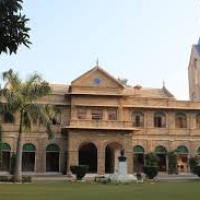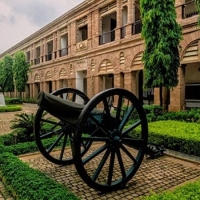List of Residential Boarding Schools in Gwalior, Madhya Pradesh
Advertisements
Boarding Schools in Madhya Pradesh by Location
About Gwalior
Gwalior (pronunciation ) is a major city in the central Indian state of Madhya Pradesh and one of the Counter-magnet cities Located 343 kilometres (213 mi) south of Delhi, the capital city of India, 120 kilometres (75 mi) from Agra and 414 kilometres (257 mi) from Bhopal, the state capital, Gwalior occupies a strategic location in the Gird region of India The historic city and its fortress have been ruled by several historic northern Indian kingdoms From the Kachchhapaghatas in the 10th century, Tomars in the 13th century, it was passed on to the Mughal Empire, then to the Maratha in 1754, followed by the Scindia in the 18th century A study of urban pollution in 2016 found the city to have the highest level of air pollution in India, and the second highest in the world.
Besides being the administrative headquarters of Gwalior district and Gwalior division, Gwalior has many administrative offices of the Chambal division of northern Madhya Pradesh Several administrative and judicial organisations, commissions and boards have their state and national headquarters situated in the city Gwalior was the winter capital of the state of Madhya Bharat which later became a part of the larger state of Madhya Pradesh Prior to Indian independence on 15 August 1947, Gwalior remained a princely state of the British Raj with the Scindia as the local rulers High rocky hills surround the city from all sides, on the north it just forms the border of the Ganga- Yamuna Drainage Basin.
The city however is situated in the valley between the hills Gwalior's metropolitan area includes Gwalior city centre, Morar Cantonment, Lashkar Gwalior (Lashkar Subcity), Maharaj Bada, Phool Bagh, ThatipurGwalior was one of the major sites of rebellion during the 1857 uprising Post-independence, Gwalior has emerged as an important tourist attraction in central India while many industries and administrative offices came up within the city Before the end of the 20th century it became a million plus agglomeration and now it is a metropolitan city in central India.
Gwalior is surrounded by industrial and commercial zones of neighbouring districts (Malanpur – Bhind, Banmore – Morena) on all three main directions A 2016 report of the World Health Organization found Gwalior to be the second-most air-polluted city in the world and the most polluted city in IndiaGwalior has been selected as one of the hundred Indian cities to be developed as a smart city under PM Narendra Modi's flagship Smart Cities Mission
Besides being the administrative headquarters of Gwalior district and Gwalior division, Gwalior has many administrative offices of the Chambal division of northern Madhya Pradesh Several administrative and judicial organisations, commissions and boards have their state and national headquarters situated in the city Gwalior was the winter capital of the state of Madhya Bharat which later became a part of the larger state of Madhya Pradesh Prior to Indian independence on 15 August 1947, Gwalior remained a princely state of the British Raj with the Scindia as the local rulers High rocky hills surround the city from all sides, on the north it just forms the border of the Ganga- Yamuna Drainage Basin.
The city however is situated in the valley between the hills Gwalior's metropolitan area includes Gwalior city centre, Morar Cantonment, Lashkar Gwalior (Lashkar Subcity), Maharaj Bada, Phool Bagh, ThatipurGwalior was one of the major sites of rebellion during the 1857 uprising Post-independence, Gwalior has emerged as an important tourist attraction in central India while many industries and administrative offices came up within the city Before the end of the 20th century it became a million plus agglomeration and now it is a metropolitan city in central India.
Gwalior is surrounded by industrial and commercial zones of neighbouring districts (Malanpur – Bhind, Banmore – Morena) on all three main directions A 2016 report of the World Health Organization found Gwalior to be the second-most air-polluted city in the world and the most polluted city in IndiaGwalior has been selected as one of the hundred Indian cities to be developed as a smart city under PM Narendra Modi's flagship Smart Cities Mission
Advertisements

